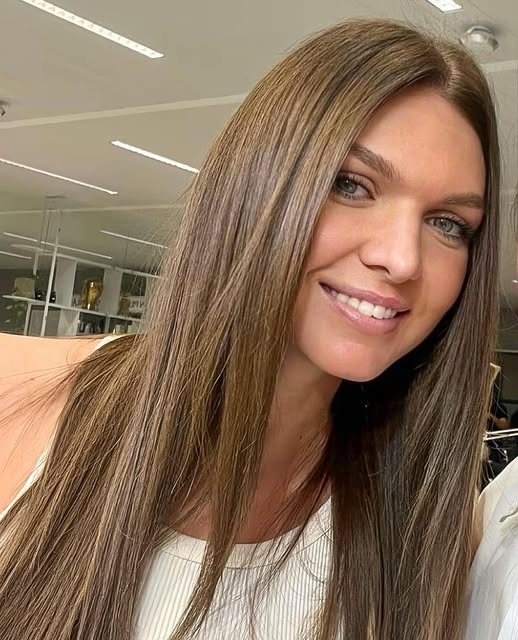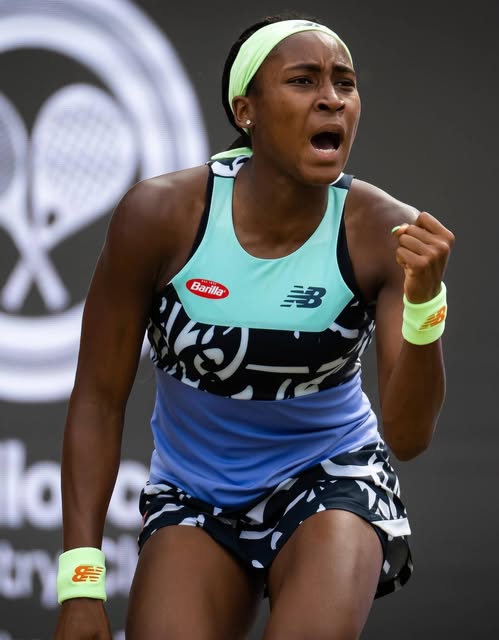Introduction:

Tennis in Turmoil: Another Romanian Pro Faces Suspension Drama
Romanian tennis has been thrust into the spotlight once again — and not for the reasons fans would hope. Just months after Simona Halep’s high-profile doping ban, another Romanian player has been suspended over a banned substance, sending shockwaves through the tennis world.
This news has ignited a storm of questions: Who is the new athlete under scrutiny? What substance was detected? Is Romanian tennis facing a deeper systemic issue?
In this blog post, we dive deep into this unfolding story, reveal what we know so far, address FAQs, and explore what this means for Romanian tennis and the WTA/ATP as a whole. If you care about fair play, athlete integrity, and the reputation of global sports, this is a story you can’t afford to miss.
Body:
1. The Breaking News: Who Was Suspended After Simona Halep?
On May 9, 2025, international sports media reported that Romanian tennis player Gabriela Ruse had been provisionally suspended by the International Tennis Integrity Agency (ITIA) after testing positive for a prohibited substance during a routine doping control.
This marks the second such case involving a Romanian player in less than 12 months — a disturbing trend that raises concerns not only about athlete oversight but also about support systems in place within Romanian tennis.
Key Fact: Ruse, a 26-year-old WTA player, was ranked inside the world’s top 100 as recently as 2022 and has represented Romania in Fed Cup competitions.
2. What Substance Was Detected in Gabriela Ruse’s Sample?
According to the ITIA’s official statement, Gabriela Ruse tested positive for Roxadustat, a substance on the World Anti-Doping Agency’s (WADA) Prohibited List under category S2: Hormone and Metabolic Modulators.
Roxadustat is used medically for anemia in chronic kidney disease but is also known to enhance endurance by stimulating erythropoietin (EPO) production — making it attractive for athletes seeking an unfair stamina boost.
⚠️ Did You Know? Roxadustat was the same substance involved in Simona Halep’s case, suggesting a disturbing pattern.
3. Timeline of Events: How Did This All Unfold?
Here’s a breakdown of the major milestones leading to the suspension:
- March 2025: Sample collected during the Miami Open.
- April 2025: Preliminary results indicate an Adverse Analytical Finding (AAF).
- May 9, 2025: ITIA publicly announces provisional suspension of Gabriela Ruse.
- Pending: Player has the right to request B-sample analysis and present a defense.
4. How Does This Affect Gabriela Ruse’s Career?
A provisional suspension halts her participation in all sanctioned events, including WTA tournaments, ITF events, and Grand Slams. This jeopardizes her ranking, sponsorships, and future as a professional player.
If found guilty, Ruse could face a ban of up to four years, depending on the investigation’s findings and whether she can demonstrate unintentional use or contamination.
5. Why Are Romanian Players Suddenly Under the Microscope?
The back-to-back suspensions of Simona Halep and Gabriela Ruse have sparked debate over the state of athlete education, support systems, and anti-doping awareness in Romania.
Some observers suggest a lack of robust medical oversight, while others point fingers at broader issues of supplement contamination and pressure to perform on the global stage.
🧠 Insider Insight: Romanian tennis federations have yet to release a unified statement addressing the trend — a silence that speaks volumes.
6. Frequently Asked Questions (FAQs):
✅ Was Gabriela Ruse using the substance intentionally?
At this point, the ITIA has not provided details on intent. Ruse is expected to argue her case, possibly claiming contamination — a common defense in recent doping cases.
✅ Could she face a multi-year ban like Simona Halep?
Yes. If found guilty without mitigating circumstances, Ruse could be suspended for up to 4 years, similar to Halep’s original ban.
✅ Can she appeal?
Absolutely. She can request her B-sample to be tested, provide evidence of unintentional ingestion, and potentially appeal any ruling to the Court of Arbitration for Sport (CAS).
✅ What are the repercussions for Romanian tennis?
Significant. These back-to-back scandals damage national credibility, reduce sponsorship opportunities, and may affect the country’s tennis development programs.
✅ Is Roxadustat common in doping cases?
Not especially — but it’s gaining notoriety due to its EPO-mimicking effects. The fact that both Halep and Ruse were allegedly found with the same substance raises red flags for regulators.
7. Statistics That Raise Eyebrows: A Widening Problem
- 43: Number of doping violations in professional tennis in 2024 alone (source: ITIA Annual Report).
- 2: Number of top-100 Romanian female players suspended in less than a year.
- 12%: Increase in positive doping tests in tennis since 2021.
- 1 in 5: Doping cases globally now involve substances linked to endurance enhancement.
These figures suggest a trend the sport can’t afford to ignore.
8. Expert Opinions: A Wake-Up Call for Tennis
Former players and analysts have weighed in:
🎙️ “This isn’t just about one country. Tennis needs to invest more in athlete education and early intervention before careers are destroyed.”
— Andrea Petkovic, former WTA top-10 player and sports analyst
The ITIA is under pressure to not only enforce rules but also educate players proactively to prevent similar cases from recurring.
9. The Fallout: Reactions From Fans and the Tennis Community
Social media platforms lit up following the announcement. From disappointment to outrage, the global tennis community expressed concerns about transparency, fairness, and the integrity of the sport.
Key reactions included:
- 🎾 “How many more players have to fall before tennis fixes its education system?”
- 🇷🇴 “This is heartbreaking for Romania. Two stars lost in two years.”
- 💬 “Is this a coincidence or a symptom of something deeper?”
The court of public opinion is already in session.
10. What Comes Next: The Road Ahead for Gabriela Ruse
Gabriela Ruse now faces several options:
- Requesting a B-sample analysis.
- Presenting a defense to the ITIA.
- Appealing any ban to CAS.
- Seeking support from national tennis bodies.
This could be a defining moment not only for her career but for Romania’s tennis reputation on the world stage.
Conclusion:
Tennis Must Confront the Truth – And Fast
The suspension of Gabriela Ruse following Simona Halep’s doping ban is not just another headline — it’s a loud alarm bell for global tennis. Two elite Romanian athletes have fallen under the same shadow, with the same substance, in less than a year. That’s no coincidence.
As fans, sponsors, and governing bodies react, one thing is clear: the sport must evolve. Doping education, transparent oversight, and athlete support must become non-negotiable priorities. Otherwise, tennis risks losing not just matches, but its moral high ground.


